It took me four years to paint like Raphael, but a lifetime to paint like a child. ~ Pablo Picasso
Art is a lie that makes us realize the truth. ~ Pablo Picasso
Le Corbusier (1887 – 1965), was a Swiss-French architect, designer, urbanist, writer and also painter, who is famous for being one of the pioneers of what now is called Modern architecture or the International Style. He designed the city of Chandigarh in India and many other buildings across Indian cities.
James Ensor (1860 –1949) was a Belgian painter and printmaker and had important influence on expressionism and surrealism.
Diego Velázquez (1599 –1660) was a Spanish painter of the contemporary baroque period. In addition to numerous renditions of scenes of historical and cultural significance, he painted scores of portraits of the Spanish royal family, other notable European figures, and commoners, culminating in the production of his masterpiece Las Meninas (1656)
Leonardo da Vinci (1452 – 1519), was an Italian polymath: painter, scientist, mathematician, engineer, inventor, anatomist, sculptor, architect, musician, geologist, botanist and writer. Leonardo is revered for his technological ingenuity. He conceptualised a tank, concentrated solar power, a calculator, the ship’s double hull and outlined a rudimentary theory of plate tectonics. Relatively few of his designs were constructed or were even feasible during his lifetime. As a scientist, he greatly advanced the state of knowledge in the fields of anatomy, civil engineering, optics, and hydrodynamics. During his lifetime Leonardo was valued as an engineer. For much of his life, Leonardo was fascinated by the phenomenon of flight, producing many studies of the flight of birds as well as plans for several flying machines, including a helicopter and a light hang glider.
Michelangelo Buonarroti (1475 – 1564) was an Italian Renaissance painter, sculptor, architect, poet, and engineer. Despite making few forays beyond the arts, his versatility in the disciplines he took up was of such a high order that he is often considered a contender for the title of the archetypal Renaissance man, along with his contemporary and fellow Italian Leonardo da Vinci.
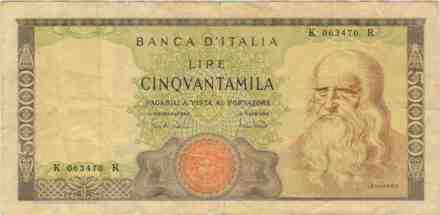
Pirosmani on One Georgian Lari
Niko Pirosmani (1862-1918) was a Georgian primitivist painter.
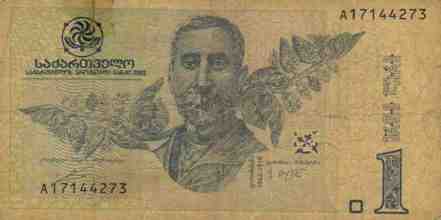
Jakopic on 100 Slovenian Tolars
Rihard Jakopič (1869 – 1943) was a Slovenian painter. He was the leading Slovenian Impressionist painter and theoretician. He is considered a pioneer of Slovenian impressionist painting.
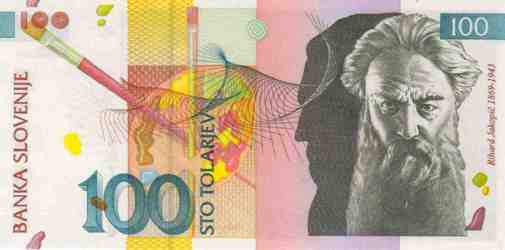
Durer's print (artwork) on German Hyperinflation 5000 Mark banknote
Albrecht Dürer ( 1471 – 1528) was a German painter, printmaker and theorist from Nuremberg. His prints established his reputation across Europe when he was still in his twenties, and he has been conventionally regarded as the greatest artist of the Northern Renaissance ever since. His watercolours mark him as one of the first European landscape artists, while his ambitious woodcuts revolutionized the potential
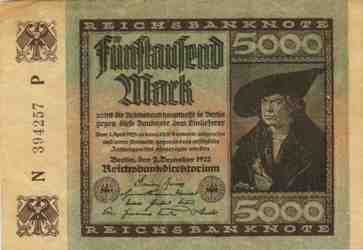
Daffinger on 20 Austrian Schillings
Moritz Michael Daffinger (1790 - 1849) was an Austrian miniature painter and sculptor.
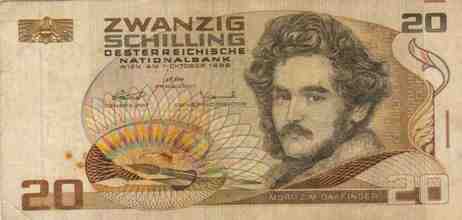
Taeuber on 50 Swiss francs
Sophie Taeuber-Arp (1889 – 1943) was a Swiss artist, painter and sculptor. Her textile and graphic works from the 1920s are among the most sophisticated geometric abstractions of the early Modernist period, reflecting a subtle understanding of the interplay between color and form.
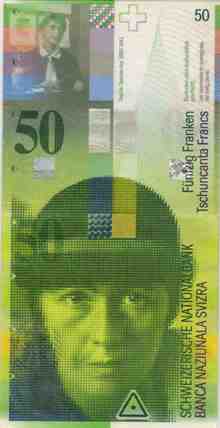
Corbusier on 10 Swiss francs

James Ensor on 100 Belgian Francs
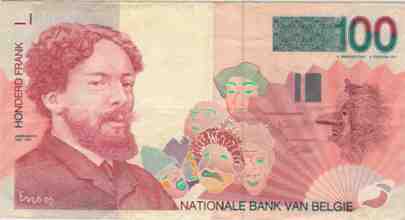
Velazquez on 50 Spanish Pesetas (1928)
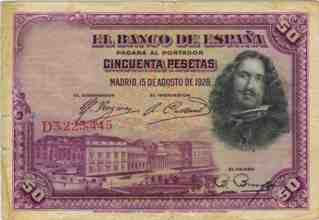
da Vinci honored on 50000 Italian Lira
Michelangelo honored on 10000 Italian Lira
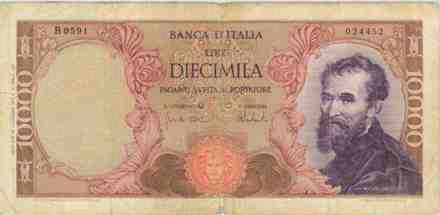
Venus (from the Birth of Venus) by Sandro Boticelli on10 Italian Eurocent.